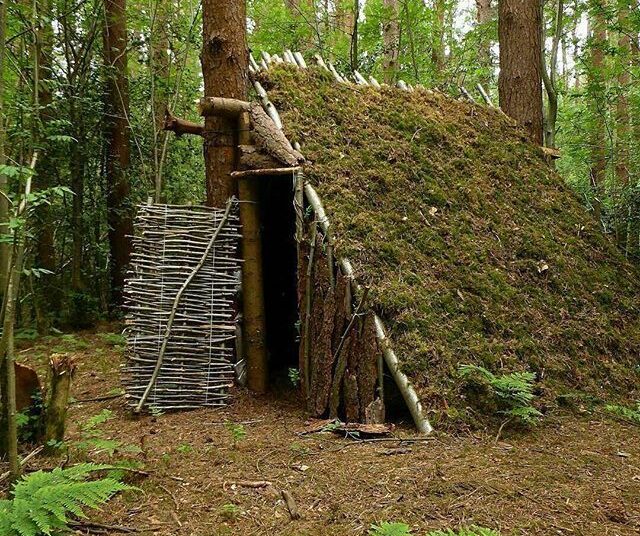As the world increasingly moves toward sustainable living practices, one of the most fascinating innovations is the use of plants to create shelter. Plant-based shelters are an ingenious blend of nature and architecture, offering a unique solution to modern-day challenges like climate change, energy efficiency, and urbanization. This article explores how plants can be used to create functional, eco-friendly shelters and the many benefits these green structures provide.
Understanding Plant-Based Shelters
Plant-based shelters refer to structures that incorporate plants into their design, either as the main building material or as a significant part of the structure. These shelters range from ancient traditional uses of plant materials to innovative, modern architectural designs. Historically, plants such as reeds, bamboo, and grass have been used for their flexibility, insulation properties, and availability. Today, modern architects are utilizing plant-based materials and living plants to create sustainable homes, greenhouses, and public spaces.
Benefits of Plant-Based Shelters
Environmental Advantages
The most obvious benefit of plant-based shelters is their positive impact on the environment. Unlike conventional building materials such as concrete or steel, plant-based materials have a low carbon footprint. They absorb CO2, provide habitat for wildlife, and reduce the need for energy-consuming heating and cooling systems.
Economic Benefits
Constructing shelters using plant materials can be highly cost-effective. Many plants, like bamboo and hemp, grow rapidly, making them sustainable and inexpensive alternatives to traditional construction materials. Additionally, these shelters often require less energy to heat and cool, reducing long-term utility costs.
Health and Well-being
Living in a plant-based shelter brings numerous health benefits. Plants purify the air, remove toxins, and provide a calming environment. A connection to nature has been shown to reduce stress, improve mood, and boost overall mental well-being.
Types of Plant-Based Shelters
Greenhouses and Bioshelters
Greenhouses and bioshelters use plants not only for aesthetic value but also for their ability to maintain an optimal temperature and humidity level. These structures can be designed to promote energy efficiency, reduce water consumption, and grow food in urban environments. Bioshelters, which combine plant life and architectural elements, can even function as self-sustaining ecosystems.
Tree Shelters and Tree Tubes
Tree shelters, often used for nurturing young saplings, protect trees from harsh environmental conditions and pests. These structures allow the trees to grow in a safe and controlled environment, ensuring their survival until they are strong enough to stand independently.
Plant Huts and Tipis
Plant huts and tipis have long been used by indigenous cultures as temporary shelters. Made from flexible plant materials such as reeds, grasses, and bark, these structures offer warmth and protection while being entirely biodegradable. In modern adaptations, plant huts and tipis are used for eco-tourism or as alternative living spaces.
How to Build a Simple Plant Shelter
Building a simple plant shelter can be a rewarding DIY project. Here’s a step-by-step guide to creating a basic plant shelter:
- Select the Right Plants: Choose plants that are fast-growing and flexible. Bamboo, willow, and certain grasses are ideal for this purpose.
- Prepare the Foundation: Decide on the size of the shelter and create a base frame using materials like wood or bamboo.
- Build the Structure: Use plant materials to create walls or roofing. Tie them together using twine or natural fibers.
- Maintain the Shelter: Water the plants regularly, ensure they have adequate sunlight, and perform minor repairs as needed.
Integrating Plant Shelters into Your Garden
Plant shelters can be a stunning addition to your garden, providing both function and beauty. When designing your plant shelter, consider the layout of your garden, the types of plants you want to include, and the shelter’s purpose (e.g., a shaded area, a food garden, or a wildlife habitat). Choose plants that complement your landscape, such as climbing vines, flowering shrubs, or ornamental grasses.
Challenges and Considerations
While plant-based shelters offer many benefits, there are some challenges to consider:
- Durability: Plants can be vulnerable to extreme weather conditions and may require regular maintenance.
- Climate Considerations: Ensure that the plants you choose are suitable for your region’s climate.
- Regulatory Aspects: Depending on your location, building a plant shelter may require permits or adherence to building codes.
Conclusion
Plant-based shelters are not just a trend; they represent a forward-thinking approach to sustainable architecture. From greenhouses to tree shelters, these structures help us live more harmoniously with nature, reduce our environmental impact, and improve our quality of life. Whether you’re an eco-conscious homeowner or a gardening enthusiast, consider integrating a plant shelter into your space to experience the many benefits that nature’s architecture has to offer.










